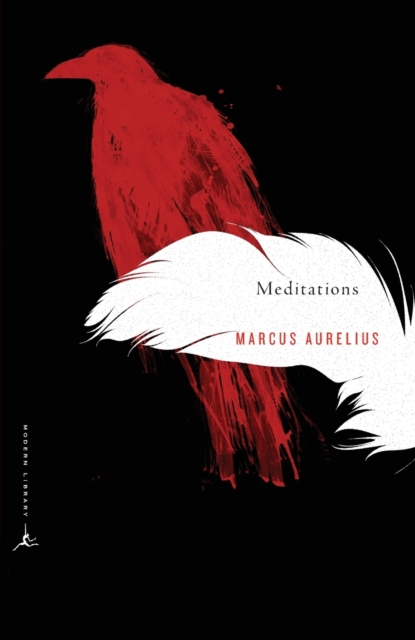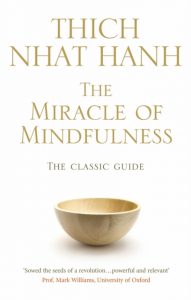What is mindfulness meditation?
Mindfulness meditation is a practice that involves paying attention to the present moment with non-judgmental awareness. This practice has been gaining popularity in recent years, as people are increasingly seeking ways to manage stress, anxiety, and other mental health concerns. Mindfulness meditation has also been shown to have a positive impact on physical health and overall well-being.
Implementing the concept of mindfulness in today’s fast-paced world is a challenging task that requires a lifetime of practice. In a society where our attention is constantly being pulled in multiple directions, it can be difficult to slow down and focus on the present moment. The demands of our daily lives, combined with our own needs and desires, make it challenging to cultivate a consistent mindfulness practice. However, with dedication and commitment, it is possible to integrate mindfulness into our daily routine and experience the benefits of a more present and grounded way of being. It may not be easy, but the rewards of mindfulness are well worth the effort.
If you’re interested in incorporating mindfulness meditation into your life, this blog post provides a list of helpful mindfulness meditation books. Whether you’re a beginner looking to establish a meditation practice or an advanced practitioner seeking to deepen your understanding of mindfulness, there’s a book on this list that can help. So, let’s explore some of the best mindfulness meditation books out there!
Please also visit our blog section Spa Secrets to learn more about Spa and Wellness.
At the bottom of this article you will find our top 5 Books on Mindfulness That Will Change Your Perspective on Life
What are the 5 basics of mindfulness practices?
- Attention: Paying attention to the present moment, without judgment or distraction. This means being fully present and aware of what is happening in your mind and body, as well as your external environment.
- Acceptance: Accepting whatever arises in your mind and body without trying to change it or judge it as good or bad. This means allowing thoughts, emotions, and physical sensations to come and go without resistance.
- Non-judgment: Observing your experiences without labeling them or reacting to them. This means letting go of preconceived ideas or judgments about what is happening and simply being with what is.
- Patience: Cultivating a sense of patience and allowing things to unfold at their own pace. This means resisting the urge to rush or push yourself, and instead letting things happen naturally.
- Practice: Regularly setting aside time to engage in mindfulness meditation or other mindfulness practices. This means making a commitment to your practice and dedicating time and effort to cultivating mindfulness in your daily life.
By incorporating these 5 basics into your mindfulness practice, you can develop a greater sense of self-awareness, emotional regulation, and overall well-being.
How do I start a mindfulness meditation?
Starting a mindfulness meditation practice is simple, but it does require patience and commitment. Read our indepth article on how to start meditation practice. Here are some steps to help you get started:
- Set aside time: Choose a time and place where you can practice mindfulness meditation without distraction. Start with just a few minutes each day and gradually increase the duration as you become more comfortable.
- Get comfortable: Sit in a comfortable and upright position with your feet flat on the floor and your hands resting in your lap. You can sit on a cushion, a chair, or on the floor – whatever works best for you.
- Focus on your breath: Bring your attention to your breath as it flows in and out of your body. Notice the sensations of the breath in your nostrils, chest, or abdomen.
- Observe your thoughts: As thoughts arise in your mind, simply observe them without judgment and then let them go. Don’t try to push your thoughts away or get caught up in them. Just acknowledge them and then return your attention to your breath.
- Come back to the present moment: If you find yourself getting distracted, gently bring your attention back to the present moment and your breath. It’s normal for the mind to wander during meditation, so don’t worry if this happens.
- End your practice: When you’re ready to end your meditation, take a moment to notice how you’re feeling. Slowly open your eyes and take a few deep breaths before returning to your day.
Remember that mindfulness meditation is a practice, and it may take time to get comfortable with it. Be patient with yourself, and try to practice regularly. You may also find it helpful to seek out a guided meditation or attend a mindfulness meditation class to help you get started.
When and how often should I practice mindfulness exercises?
When starting a mindfulness meditation practice, it’s important to start with a realistic and achievable duration. Starting with just a few minutes each day is a good way to build a foundation and gradually increase the duration as you become more comfortable.
For beginners, starting with just 5-10 minutes of mindfulness meditation per day is a good place to start. Over time, you can gradually increase the duration to 15-20 minutes or longer if you wish. The important thing is to establish a consistent weekly and maybe in a future a daily practice, even if it’s just a few minutes per day.
Remember, the goal of mindfulness meditation is not to achieve a specific outcome, but rather to cultivate a sense of awareness and presence in the present moment. Even a few minutes of practice can have a positive impact on your mental and emotional well-being, so don’t feel like you have to commit to a long meditation session in order to experience the benefits.
Is mindfulness meditation scientifically proven?
Yes, yes and yes, mindfulness meditation has been scientifically proven to have a number of benefits for both mental and physical health. Over the past few decades, numerous studies have been conducted on the effects of mindfulness meditation, and the results have been promising.
Some of the scientifically-proven benefits of mindfulness meditation include:
- Reduced stress and anxiety: Mindfulness meditation has been shown to reduce symptoms of stress and anxiety by calming the mind and promoting relaxation.
- Improved mental clarity and focus: Mindfulness meditation can help improve cognitive function, including memory, attention, and decision-making.
- Better emotional regulation: Mindfulness meditation can help individuals regulate their emotions more effectively, leading to improved mood and greater emotional stability.
- Lower blood pressure and improved heart health: Regular practice of mindfulness meditation has been linked to improved cardiovascular health, including lower blood pressure and reduced risk of heart disease.
- Reduced symptoms of depression: Mindfulness meditation has been shown to reduce symptoms of depression by promoting a more positive outlook and helping individuals manage negative thoughts.
These are just a few of the many scientifically-proven benefits of mindfulness meditation. If you’re interested in learning more, there are numerous studies and articles available online that explore the topic in greater detail.
See our blog post The Mental Benefits of Spa Treatment
5 Books on Mindfulness That Will Change Your Perspective on Life
#1 The Miracle Of Mindfulness: The Classic Guide to Meditation by Thich Nhat Hanh
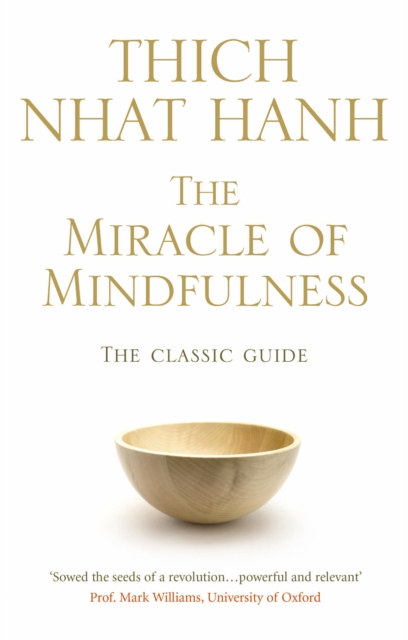
This is a beautiful and inspiring book by Thich Nhat Hanh, a well-known Buddhist monk and teacher. The book is an introduction to mindfulness and provides simple and practical advice that can be easily applied to daily life to live more mindfully and with less stress.
The author shares his first-hand experience with mindfulness and explains various practices and key sutras in a clear and compelling manner. Thich Nhat Hanh’s writing style is easy to read and flows well, making the book accessible to everyone, regardless of their level of experience with Buddhism or mindfulness.
The book’s message is clear: we spend too much time worrying about the past and future, without ever stopping to consider the present moment and our place within the world. By practicing mindfulness, we can slow down and re-prioritize what is truly important in life, leading to a less stressful and more fulfilling existence.
One of the most inspiring aspects of the book is the way in which the author weaves his teachings with personal stories and anecdotes, making it relatable and engaging. His descriptions of life and work are powerful and provide a glimpse into the mind of a great monk.
The book’s first half is easily accessible, and as the reader progresses, the teachings become deeper and more detailed. Thich Nhat Hanh’s teachings are clear and compelling, with flashes of subtle humor that make it an enjoyable read.
Overall, “The Miracle Of Mindfulness” is a treasure of wisdom that can be applied to anyone’s life. It is an excellent introduction to skilful means to change one’s life, making it a must-read for anyone interested in mindfulness, Buddhism, or simply living a more fulfilling life. The book is a reminder that the most important journey we can undertake is the journey within ourselves.
#2 The Little Book of Meditation: 10 minutes a day to more relaxation, energy and creativity by Dr Patrizia Collard
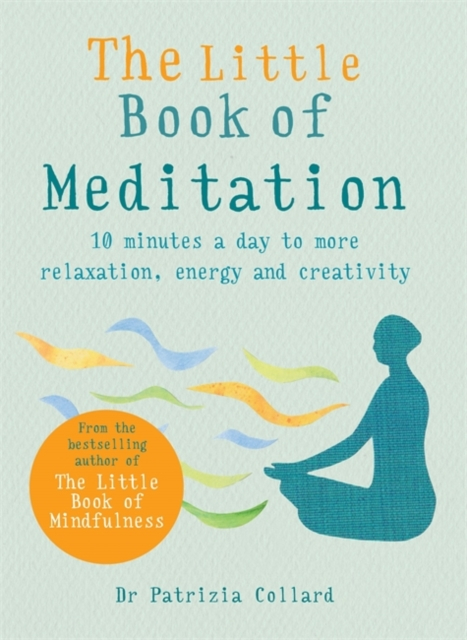
“The Little Book of Meditation: 10 minutes a day to more relaxation, energy, and creativity” is a wonderful book that offers great insight into the world of meditation. The book is designed for people who are new to meditation or those who don’t have a lot of time. It’s a pocket-sized book that you can take with you wherever you go, so you can meditate whenever you have a few minutes to spare.
The author provides various short meditations for different moods, making it easy for the reader to find a meditation that suits their needs. The meditations are easy to follow and provide useful tips on how to meditate effectively. The book is a great way to learn how to meditate and start incorporating it into your daily routine.
One of the best things about the book is its size. It’s small and compact, so you can easily carry it with you on the go. This means that you can take a few minutes out of your busy day to meditate and relax, no matter where you are.
The book is also great for people who are looking for new ways to relax and destress. The author provides easy-to-remember tricks that can be adapted to different circumstances. These meditation programs are a great way to unwind and find inner peace.
Overall, “The Little Book of Meditation” is a great book for anyone looking to learn how to meditate or those who want to incorporate meditation into their busy lives. The book is easy to read, compact, and offers useful tips and tricks for relaxation, energy, and creativity. It’s a great resource for anyone looking to improve their mental well-being and live a more fulfilling life. Great gift for someone getting into meditation!
#3 10% Happier: How I Tamed the Voice in My Head, Reduced Stress Without Losing My Edge, and Found Self-Help That Actually Works – A True Story by Dan Harris
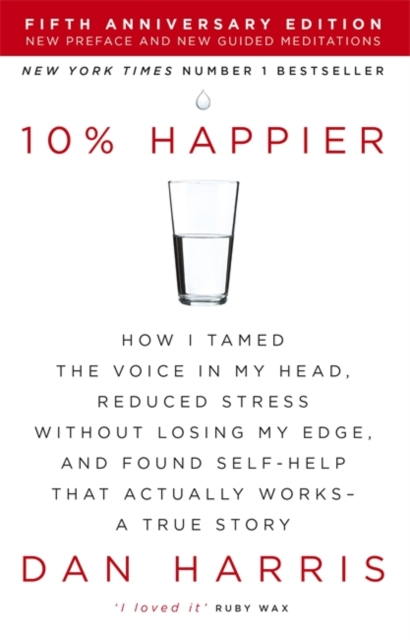
“10% Happier” by Dan Harris is a refreshingly honest and approachable self-help book that chronicles the author’s journey towards taming the voice in his head and reducing stress without losing his edge. Harris, suffered a panic attack live on air in front of millions viewers. This life-changing event sparked his interest in mindfulness and meditation techniques, and he embarked on a quest to learn more about these practices and how they could benefit his life.
The book is written in a conversational tone that is both relatable and engaging. Harris’s honesty about his own human failings and misgivings about practicing mindfulness makes the book all the more relatable and accessible. He is a mindfulness training student like the rest of us.
Harris shares his experiences of attending meditation retreats and seeking out gurus in his quest for inner peace. He is candid about the difficulties he encountered along the way, such as finding the right meditation style and overcoming the voice in his head that constantly doubted the efficacy of these practices.
Humor is also a prominent feature of the book, which helps to make it an enjoyable and easy read. Harris’s wit and self-deprecating humor keep the book from becoming too heavy or preachy, and add to its down-to-earth and approachable nature.
Overall, “10% Happier” is a well-written and thought-provoking book that offers a fresh perspective on the practice of mindfulness and meditation. Harris’s honesty, humor, and practical advice make this book a must-read for anyone interested in improving their mental well-being and finding inner peace. While this book may not be for everyone, it is highly recommended for those looking for an honest, relatable, and accessible approach to mindfulness and self-improvement.
see on amazon#4 “Stop Overthinking: 23 Techniques to Relieve Stress, Stop Negative Spirals, Declutter Your Mind, and Focus on the Present (The Path to Calm)” by Nick Trenton (Author)
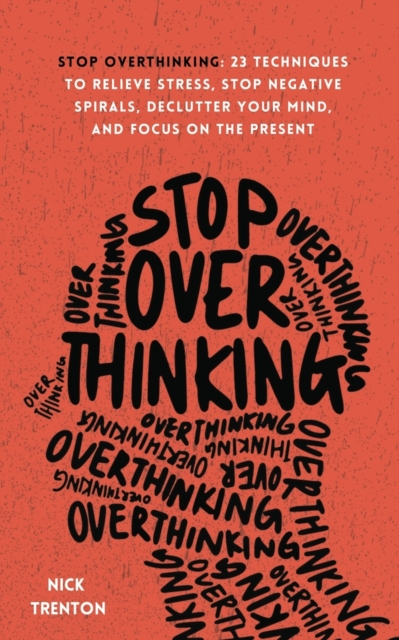
This book may be the black sheep of this list of books, but trust us, it’s still relevant and important.
“Stop Overthinking: 23 Techniques to Relieve Stress, Stop Negative Spirals, Declutter Your Mind, and Focus on the Present (The Path to Calm)” by Nick Trenton is a valuable resource for anyone struggling with negative thinking patterns and anxiety. The book provides practical and effective strategies for managing stress, including time management, meditation, and visualization techniques. It is well-written and easy to read, making it accessible to anyone looking for tools to improve their mental health. The techniques described in the book are subtle and simple, yet profound, and can have a significant impact on one’s overall well-being. While the book acknowledges that change takes time and effort, the techniques presented can help readers gain a better understanding of their emotions and thoughts and learn to accept them for what they are, ultimately leading to a more peaceful and fulfilling life. Overall, this book is highly recommended for anyone seeking practical strategies to overcome negative thinking patterns and improve their mental health.
Our favorite recommendation is:
#5 Meditations: A New Translation by Marcus Aurelius (Author), Gregory Hays (Translator)
“Meditations: A New Translation” by Marcus Aurelius is a thought-provoking and insightful book that offers guidance on how to live a good life by applying ancient Stoic philosophy to modern times. Despite its seemingly simple language, the book challenges our modern habits of rushing through life and encourages us to reflect on what really matters. Through his words, Marcus urges us to become better people by living a virtuous life.
The book can be life-changing, as it prompts readers to question their perspectives and challenge their habits. However, to fully grasp the meaning of his words, it is recommended to delve deeper into Stoic philosophy.
The translation by Gregory Hays is superb, capturing the beauty of the original language while using modern English. It’s easy to read yet insightful, and it is understandable why this book has survived for almost 2000 years.
Overall, “Meditations” is a valuable guide for anyone seeking to live a good life, providing help and guidance during moments of uncertainty, struggle, and loss. It’s a brilliant book and probably the best version of “Meditations” available, with a great introduction to Marcus and his ideas. It’s a book to be read slowly and reflected upon, as Marcus presents amazing perspectives in a digestible way. It’s not surprising why he was deemed one of the 5 ‘good’ emperors with such reflections and ideas that he tried to live by.
